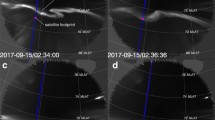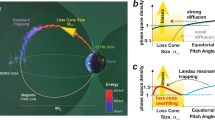Abstract
AMPLE evidence exists for a physical connexion of some kind between certain solar events, typified by a flare, and such related phenomena as disturbances in the Earth's magnetic field and in the ionosphere, and the occurrence of aurora. A variety of model mechanisms has been proposed to describe the links in the chain of connexion. But whether they invoke a stream of particles emanating from the active solar area or an elongated envelope of solar magnetic field anchored on the area for the first stage in the linkage from the Sun, few of the models continue the mechanism in detail nearer the Earth than the outer confines of the magnetosphere. There are defects in any model which tries to continue the particle stream directly down to auroral level in the Earth's atmosphere using the geomagnetic field as guide lines; and to introduce the outer radiation belt as an intermediate stage has incurred the difficulty, at least according to present notions, that the energy which can be stored there is inadequate to sustain great auroral displays.
This is a preview of subscription content, access via your institution
Access options
Subscribe to this journal
Receive 51 print issues and online access
$199.00 per year
only $3.90 per issue
Buy this article
- Purchase on Springer Link
- Instant access to full article PDF
Prices may be subject to local taxes which are calculated during checkout
Similar content being viewed by others
References
British Polar Year Expedition, 1932–33, 1 (Brit. Nat. Comm. for the Polar Year, Boy. Soc., London, 1937).
Author information
Authors and Affiliations
Rights and permissions
About this article
Cite this article
STAGG, J. Terrestrial Control in the Production of Aurora. Nature 207, 969–970 (1965). https://doi.org/10.1038/207969a0
Issue Date:
DOI: https://doi.org/10.1038/207969a0
Comments
By submitting a comment you agree to abide by our Terms and Community Guidelines. If you find something abusive or that does not comply with our terms or guidelines please flag it as inappropriate.



